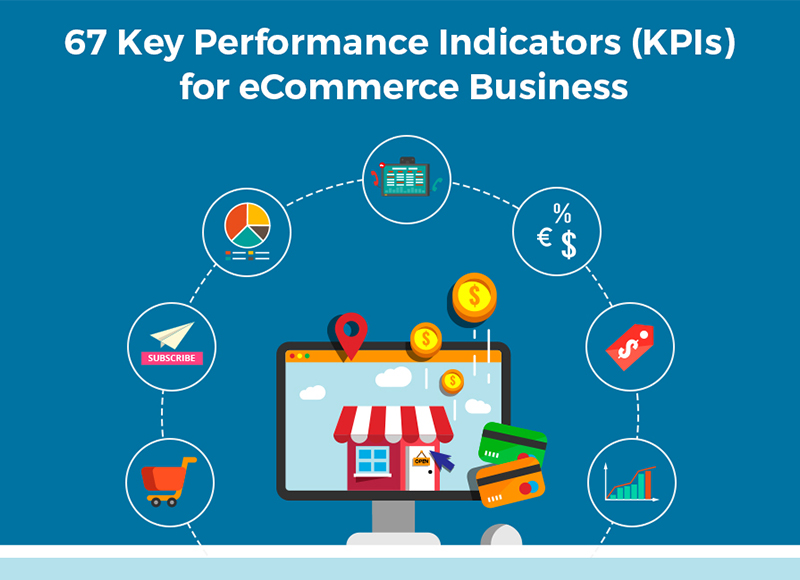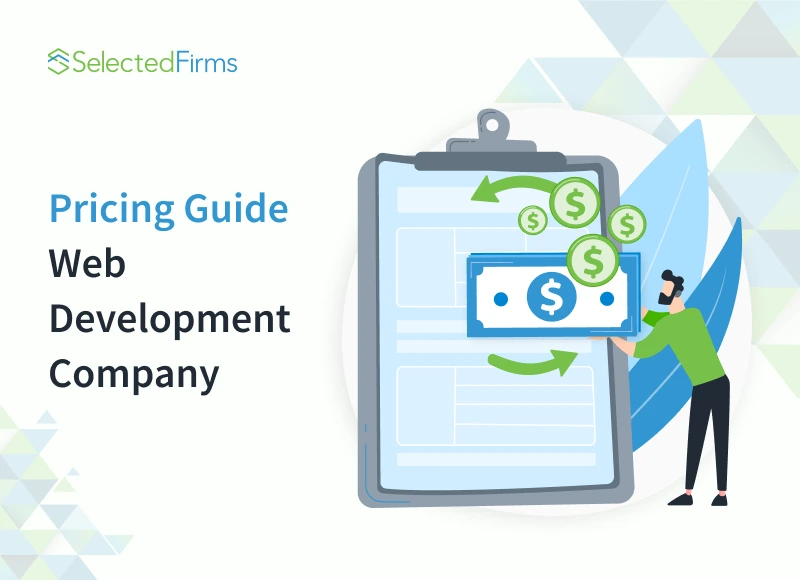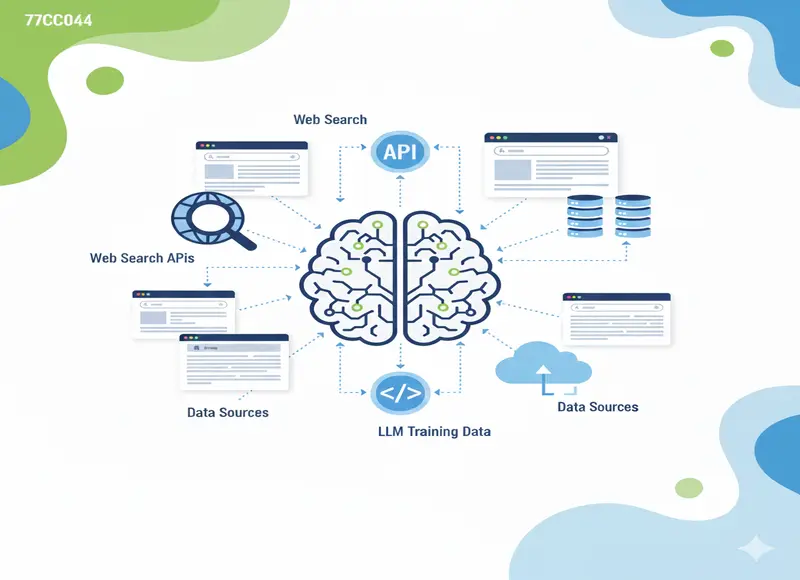Table of Contents
Before we fly into the world of KPIs of e-commerce let’s have some leprechaun idea of e-commerce.

Before we fly into the world of KPIs of e-commerce let’s have some leprechaun idea of e-commerce.
What is an eCommerce business:
Electronic commerce stands for commercial transactions conducted online. Which in simple language means whatever you buy or sell using the internet, you are a part of e-commerce. In simpler words, we can say that electronic commerce or internet commerce stands for buying and selling of goods and services using the internet, and the transfer of money and data to execute these transactions. E-commerce is misunderstood by selling and purchase of any tangible asset but it is selling and buying of intangible and tangible assets and services.
History of an e-commerce business:
If we flip the page of time we will come across a story that may not sound too exciting today, but at that time, this particular transaction made history. Why? Because it was the first time in history that encryption technology was used to enable an internet purchase. Many consider that instance as the first “true” e-commerce transaction.
It was August 11, and the year was 1994. “Phil Brandenberger” of Philadelphia logged into his computer system and used his credit card to buy Sting’s “Ten Summoner’s’ Tales” for $12.48 (plus shipping), this incident paved the path to e-commerce. Now let’s take a turn toward what is key performance indicator and performance indicator and their respective significance.
What is a performance indicator?
The performance indicator is used for evaluating specific goals and objectives that are to a quantifiable measurement used to gauge performance relative to some goals, for example, an online retailer needs to increase traffic at its side by 20%. Now let’s turn the page to a key performance indicator.
Key performance indicator:
Since measurable performance indicators might be many and to cut them short we pick only a few of them which is regarded as key performance indicators, or in other words, we can say that KPIs are those things that are associated with goals and objectives, elements of your plans, that are the expression of what you want to achieve and by when.
Those quantifiable, outcome-based statements are called KPIs. KPIs are a heartbeat for your performance management process.
They come in four different flavors:
- Measure
- Target
- Source
- Frequency
These measures will tell you if you are making progress against the strategy. These four processes are measured across raw numbers, progress, and changes.
Why is the key performance indicator for eCommerce important?
Without KPIs, it’s very difficult to gauge your progress which would be limited to sure gut feeling and qualitative measurement only, personal preferences or belief.
KPIs will tell you the correlation between your customer and your business strategy so that you can make decisions related to based information.
Few of the paramount importance of key performance indicators for eCommerce are:
- The real value lies in the analysis of data and opting for options to make decisions.
- You will clearly get inside of the root cause of the problem.
- Data that you helm from KPIs can be easily distributed to the team.
- KPIs can act as a driving force to educate your employees and come together for critical problem-solving.
What are eCommerce KPIs metrics?
A KPI is essentially used to measure performance and success, a key factor for any B2B eCommerce business aiming to improve operational efficiency and track metrics like conversion rates and revenue growth., keeping this in mind one can say that a KPIs can be a matric, whereas a matric may not be considered as a KPIs. To conclude we can say that,
Metrics are just a pathway to measure things whereas KPIs are a way of monitoring the most important aspects of your business in such a way that helps you determine what actions and steps to take also KPIs are often created from two or more metrics also Key performance indicator are made from an amalgamation of two or metrics:
Example:
1) Web traffic
2) Number of sales
The relationship that we drove from these two metrics are called “conversion rate”
A KPIs should be governed by the following principles:
- Deduce a specific objective for each and every KPI.
- You must be able to measure your progress over a specific span of time.
- KPIs can be deduced with a reasonable sort of effort.
- Results should be implied to your goals.
Top e-commerce metrics are
- Sales Conversion Rate
- Website Traffic
- Email Opt-In Conversion Rate
- Revenue by Traffic Source
- Customer Acquisition Cost
- Average Order Value
- Customer Lifetime Value
- Percentage of Returning Customers
- Shopping Cart Abandonment Rate
- Net Promoter Score
Net Promoter Score Survey is a metric that provides relevant insight into how strong
Types of key performance indicators for eCommerce:
There are myriad KPIs, they may be qualitative, prediction of the future, past-oriented or quantitative. When we talk about e-commerce business we can distinguish KPIs into five categories:
1 Sales
2 Project management
3 Marketing
4 Manufacturing
5 Customer service
68 key performance indicator for eCommerce Business:
If we talk about KPIs words will fall short to cover a myriad list of KPIs but a few major to talk about are as follows:
What are the KPIs for sales?
Sales key performance is a benchmark to measure how your performance is going in terms of conversion and revenue.
The basic KPIs for sales and revenue are as follows:
1) Sales:
E-commerce retailers can monitor total sales (number of goods sold) by an hour, day, week, month, quarter, or year also one of the factors to measure eCommerce success.
2) Average margin:
The average margin is a percentage that represents your profit margin over a period of time.
3) Average order size:
Also called (average market basket), the average order size tells you how much a customer spends on a particular single order.
4) Gross profit:
This KPIs is calculated via subtracting the total cost of goods sold from total sales, also this is one of the prime factors to measure eCommerce success.
5) A number of transactions:
This KPI tells us that how much transaction has taken place.
6) Conversion rate:
The conversion rate, also a percentage, is the rate at which users on your e-commerce site are buying. This is calculated by dividing the total number of visitors by the total number of conversions.
7) Product affinity:
Association and by clustering we can get to know which two (or more) products are being brought together. These KPIs can and should inform cross-promotion strategies.
8) New customer orders vs. returning customer orders:
This metric remarkets a comparison between new and repeats customers. Many firms only focus on customer acquisition, but customer retention also drives loyalty, word of mouth marketing, and higher-order values. So the firm should focus on both fronts, they should focus on making new customers and also customer retention, also a firm’s prime focus should be to convert first-time customers to a loyal customer. These KPIs actually became a distinguishing factor in measuring an eCommerce success.
9) Shopping cart abandonment rate:
The key performance indicator in the eCommerce business tells you how many users are adding products to their shopping cart but they are not willing to check out. The lower this number, the better it is. If your shopping cart abandonment rate is too high, there may be too much friction in the checkout process. So the lower it is the better performance it denotes.
10) Revenue per visitor (RPV):
It is the amount that a customer sends during a visit to your site (web page). But if somehow this KPI is coming low you can analyze what is going wrong and simultaneously can try to do marketing or try to incorporate those measures by which you can increase the revenue graph.
11) Cost of goods sold (COGS):
COGS remarks on how much you’re spending to sell a product. This includes manufacturing (operational), employee wages, and overhead costs or in layman’s language on can say that it is the total amount of investment made to sell a specific product in the market.
12) Total available market relative to a retailer’s share of the market:
Following this KPI one can get to know that how much his business is growing compared to others within his industry.
13) Product relationship:
This KPI stands for which products are viewed consecutively (by association rule). Again, use this KPI to make effective cross-selling tactics.
14) Inventory levels:
This KPI tells you how much stock is on hand, how quickly the product is selling, etc.
15) Competitive pricing:

It is one of the most important key performance indicators for eCommerce businesses to benchmark your growth and relatively your strategies also behave as a cutting tool to come ahead of your competitors. Suppose your competitor is using (investing the same amount of money in the finished goods) how you going to fix your prices for that fixed product going to be a cut above the competition and gives you an edge.
16) Customer acquisition cost (CAC):
CAC is a benchmark to distinguish how much your company has spent to acquire or make first time customers. This is deduced by glancing at your marketing spend and how it breaks down per individual customer.
17) Customer lifetime value (CLV):
This KPI actually tells how much a customer is worth doing business with. It marks the loyalty of a customer. If a business wishes to grow it needs to grow customer lifetime value and customer loyalty towards them.
18) Churn rate:
For e-commerce, the churn rate marks how quickly customers are leaving your brand or failing (canceling) to renew a subscription with your brand. In an easy way, one can say that at what rate one is turning a blind eye towards your products.
19) Orders placed outside office hours:
This is another good KPI for B2B eCommerce business. It shows how you are taking care of the needs of your customers and support them in continuing to invest in your eCommerce business.
What are the key performance indicators for manufacturing?
This kind of key parameter is related to the supply chain and production. These key performance indexes will tell you what are the shortcoming and scope of improvement in production, as well as help you understand expenses.
KPIs for manufacturing in e-commerce include:
20) Cycle time:
IT is the time period in which a single product finishes from its inception to its final finished stage. It also governs how efficiently a firm is functioning.
21) Overall labor effectiveness (OLE):
This key performance indicator for the eCommerce business basically deals with how productive staff is who is operating machinery, it deals with the efficiency of labor with machinery.
22) Yield:
It tells you about the number of products you have manufactured.
23) First-time yield (FTY) and first time through (FTT):
This KPI basically deals with the amounts of goods that got waste that is in the inception the good from being into a successful yield drop off to a wasteful margin. To calculate FTY, divide the number of successfully manufactured (finished units) by the total number of units that started the process.
24) The number of non-compliance events or incidents:
In manufacturing, there are several sets of regulations (business laws), licenses, and policies businesses must comply with. These are related to safety, working conditions, and quality. To ensure through flow you need to make a successful abiding with these regulations and try to minimize the negative result.
25) Overall equipment effectiveness (OEE):
This KPI looks after how a firm’s equipment is performing and its overall inputs and efficiency.
What are the key performance indicators for customer service?
Peter Drucker once said, “You can’t manage what you don’t measure”. If you are not measuring your customer services then how you will be able to improve the provided services to your customer, above all how you will judge the success of your actions and your investment.
Key performance indicators for customer service include:
26) Customer satisfaction (CSAT) score:

The CSAT KPI is a measure of the satisfaction level that your service provides to your customers which is to measure the satisfaction level of your customer by floating a questioner.
27) Hit rate:
The hit rate is the ratio of the total number of sales of a single product and the number of customers who have contacted your customer service team about said product.
28) Customer service email count:
This is the total number of emails that your customer support team receives.
29) Customer service phone call count:
Rather than receiving emails, it is the count of phone calls that customer makes to customer care.
30) Customer service chat count:
If you have the live chat option on your side, it is the total amount of chat that a customer service provider has made to the customer.
31) First response time:
It is one of the prime KPIs for the eCommerce business. It is the time that a customer has to go through when his first query is resolved. Aim low!
32) Average resolution time:
This is an average resolving time taken by the service provider team to resolve the query from the inception where /since it got generated.
33) Active issues:
This is the total amount of count of tokens/issues that are presented here.
34) Backlogs:
This KPI is a measure of issues that are getting backed up in your system.
35) Concern classification:
This is the resolution method that looks at data around trends to see if you can be proactive and reduce customer support queries. You’ll classify the customer concerns (for data analysis and clustering) which will help identify trends and your progress in solving issues.
36) Service escalation rate:
This is the total number when a customer asked to get assessed with senior executives. You want to keep this number low.
37) Net promoter score (NPS):
Net promoter score is an insight that tells how strong is your bond with the customer and testifies the customer loyalty that is they promoting your brand in their internal network. Also, this is one of the prime factors to measure eCommerce success.
What are the key performance indicators for marketing?
Key performance indicators for marketing actually is a performance indicator and an inclination that how we should do promotion of our web site/product so that it gets a hike in sell, also marketing is done to convert its regular and first-time customer into a loyal customer.
Examples of key performance indicators for marketing include:
38) Site traffic:
Site traffic is the count that how much the person is hitting your website which in return is a boon for the website as the more the traffic for a given site more is the probability to sell the product. For many successful USA based eCommerce Development Companies, this KPI has become a prime factor to measure success in eCommerce.
39) Return on Ad Spend (ROAS):
This is the amount of revenue that you generated from your marketing efforts divided by the marketing costs that you infused.
40) Cost per Acquisition (CPA):
This is the total amount that you pay for the acquisition of a new customer (that is how you make a new customer has nothing to do with the loyalty of a customer).
41) Customer Lifetime Value (CLV):
This is the estimated amount of purchases that a customer makes in his life till he/she was associated with your brand. This became a prime factor to measure success in eCommerce.
42) New visitors vs. returning visitors:
IT is the count that how much we are able to convert the customer from being to the first time a regular one. Time on site: This Key performance indicator tells you how much time visitors are spending time on your website. Generally, more time spent means they’ve had deeper engagements with your brand. Usually, you wish to see more time spent on blog content, landing pages, and less time spent through the checkout process.
43) Bounce rate:
If the user bounces back after visiting the side first page rather than exploring the website, one should look for the reason why the customer is not exploring the site after visiting the first page.
44) Pageviews per visit:
If the user is viewing a couple of pages every time he login that is a good side for the firm as it keeps the customer engaged. But if it takes a lot of time to reach customers what product he is searching for then it’s time for you’re to makes changes in your site.
45) Average session duration:
The average amount of time a person spends on the site is the average session duration.
46) Traffic source:
This is the source by which customer finds your site or one can say that it is the source from which one can find the inception of traffic, e.g. paid ads, website, etc. after one know from where the traffic is coming they should focus more to get traffic.
47) Mobile site traffic:
Analyze the total number of users who use mobile devices to access your store and make sure your site is optimized for mobile.
48) Daypart monitoring:
This is a perimeter that helps you to judge when is the time when traffic to your site is at its peak.
49) Newsletter subscribers:
This is the traffic that you have generated in your email marketing list. Also one should know if you have more subscribers, you can reach more consumers.
50) Texting subscribers:
This is a bit new as compared to email. This actually tells how many are at a database of your and active subscribers.
51) Subscriber growth rate:
This key performance indicator for the eCommerce business tells you with what how frequently your Subscriber is increasing.
52) Email open rate:
Email open rate is the percentage of the amount of email that is being opened by the user which you send to them. If somehow you have a low email open rate, you could test new subject lines, or you can try cleaning your list for inactive or irrelevant subscribers.
53) Email click-through rate (CTR):
The click-through rate tells you the percentage of those who actually clicked on a link after opening. This is more important than the open rate because, without clicks, you won’t be able to drive any traffic to your site.
54) Unsubscribes:
Those who have not subscribed even after the CRT.
Chat sessions initiated: If you have live chat functionality on your eCommerce store, the number of chat sessions initiated tells you how many users engaged with the tool to speak to a virtual aide.
55) Social followers and fans:
This key performance indicator tells you how much your customer is loyal to you on the social media platform.
56) Clicks:
The total number of clicks a link generates. This KPI can be almost measured anywhere: on your website, social media, email, display ads, PPC, etc.
57) Average CTR:
This tells you the percentage of users on a page who click on a link, or after visiting the page the user has clicked to the link.
58) Average position:
This key performance indicator tells you about your site’s search engine optimization (SEO) and paid search performance, this tells where you are on search engine results pages
59) Pay-per-click (PPC) traffic volume:
If PPC campaigns are running, this is a measure that tells you how much traffic you’re successfully driving to your site.
60) Number and quality of product reviews:
Feedback is a great KPIs by which you can actually develop your product.
61) Banner or display advertising CTRs:
The CTRs for your banner and display ads will demonstrate your performance regarding how many clicks have been converted in the banner or display advertising.
62) Affiliate performance rates:
This KPI actually measures and tell you which channels are more successful.
63) Blog traffic:
By simply creating an analytics view you can see what are your blog traffic also you need to compare your blog traffic and your site traffic. You can use Sankey Charts for this purpose.
What are the key performance indicators for project management?
Well, the key performance indicator for project management is how well you are handling your task and allocating resources. For each and every project or initiative within your eCommerce business has different goals and priorities and must be managed with different processes and workflows. Project management KPIs look into how well your team is looking to finish the project and the patches that need to be carried.
Key performance indicators for project management include:
64) Hours worked:
This is the measure of the amount of time that a team put to complete that particular task. The project manager should have access to the requirement needed and the amount of time that a team going to put to full fill that particular task in reality.
65) Budget:
It is the amount of money that you have infused in a project. Project managers (and e-commerce business owners) will wish to make sure that the budget makes a sound to reality; if you’re repeatedly over budget, some adjustments and changes to your project planning need to be done.
66) Return on investment (ROI):
The return on investment is the benchmark of return over the amount that we have an investment in the project. It is the amount that overflowed over the investment that we infused.
67) Cost variance:
Just as it’s helpful to compare real vs. predicted timing and hours. This will help you understand where you need to reel it in and where you may want to invest more.
68) Cost performance index (CPI):
The CPI akin to ROI tells you how much is your resource investment is worth. The CPI is calculated by dividing the earned value by the actual costs. If the value has come under one, there’s room for improvement.
Wrapping Up:
Monitoring these eCommerce KPIs will be useful to see how business is progressing at the present moment. By analyzing and measuring eCommerce site’s performance in these key areas, enterprises can improve their sales strategy as well as accomplish targets marketing to customer service to enjoy a steady period of growth and success of online eCommerce stores. With so many realistic KPIs in the field of any eCommerce business, it is very crucial to select the correct platform, among various options like Magento, Shopify, or Woo-commerce, and also ensure that the appropriate amount of attention is focused on the most valuable KPIs, something that our eCommerce developers are acutely aware of. So tracking the right eCommerce KPIs will improve your business model, lead to better growth, and help you understand your buyers’ journey.
Recent Blogs
9 Operational Excellence Strategies: How Leading Enterprises Optimize Performance
-
24 Dec 2025
-
6 Min
-
226








